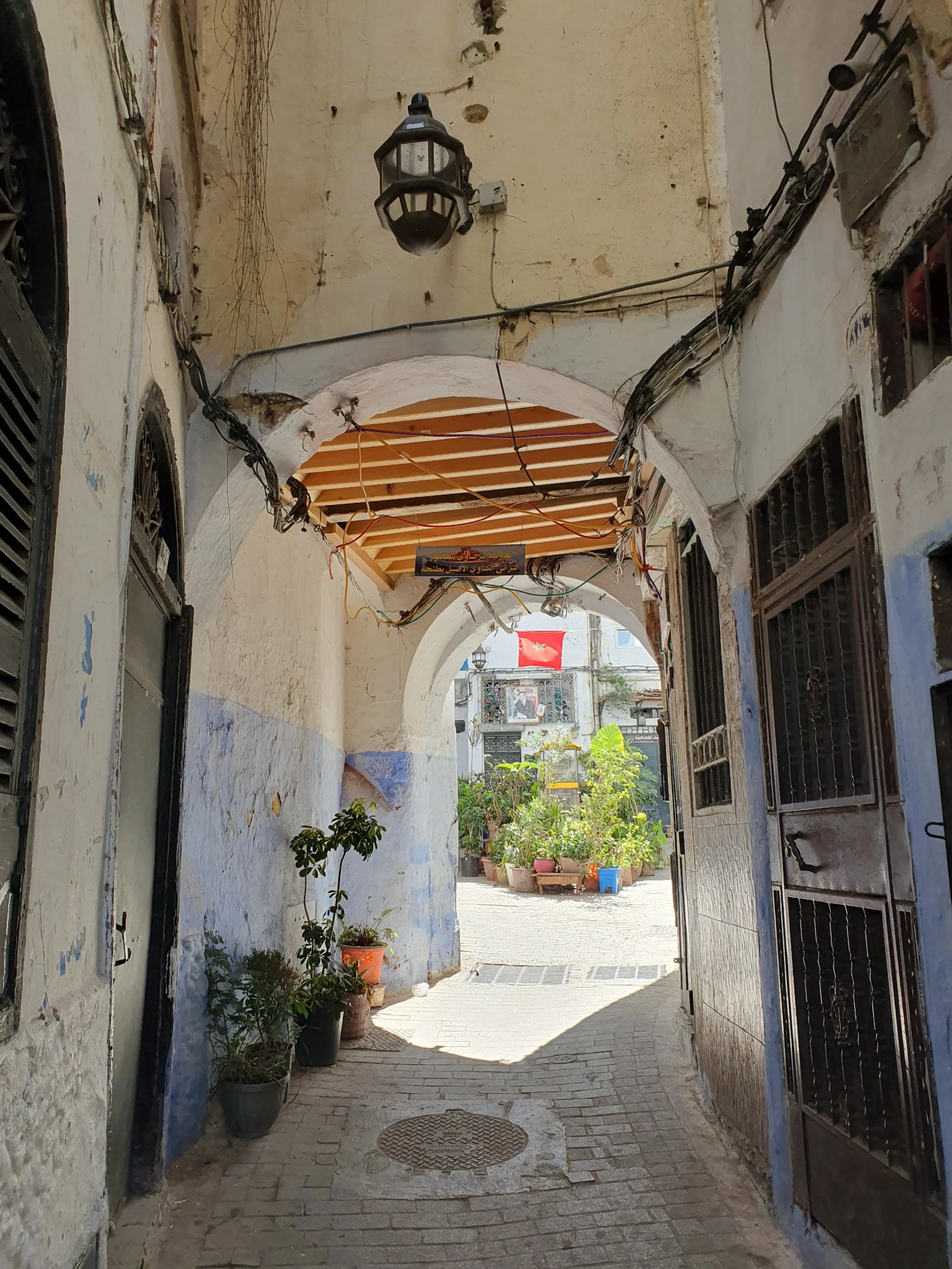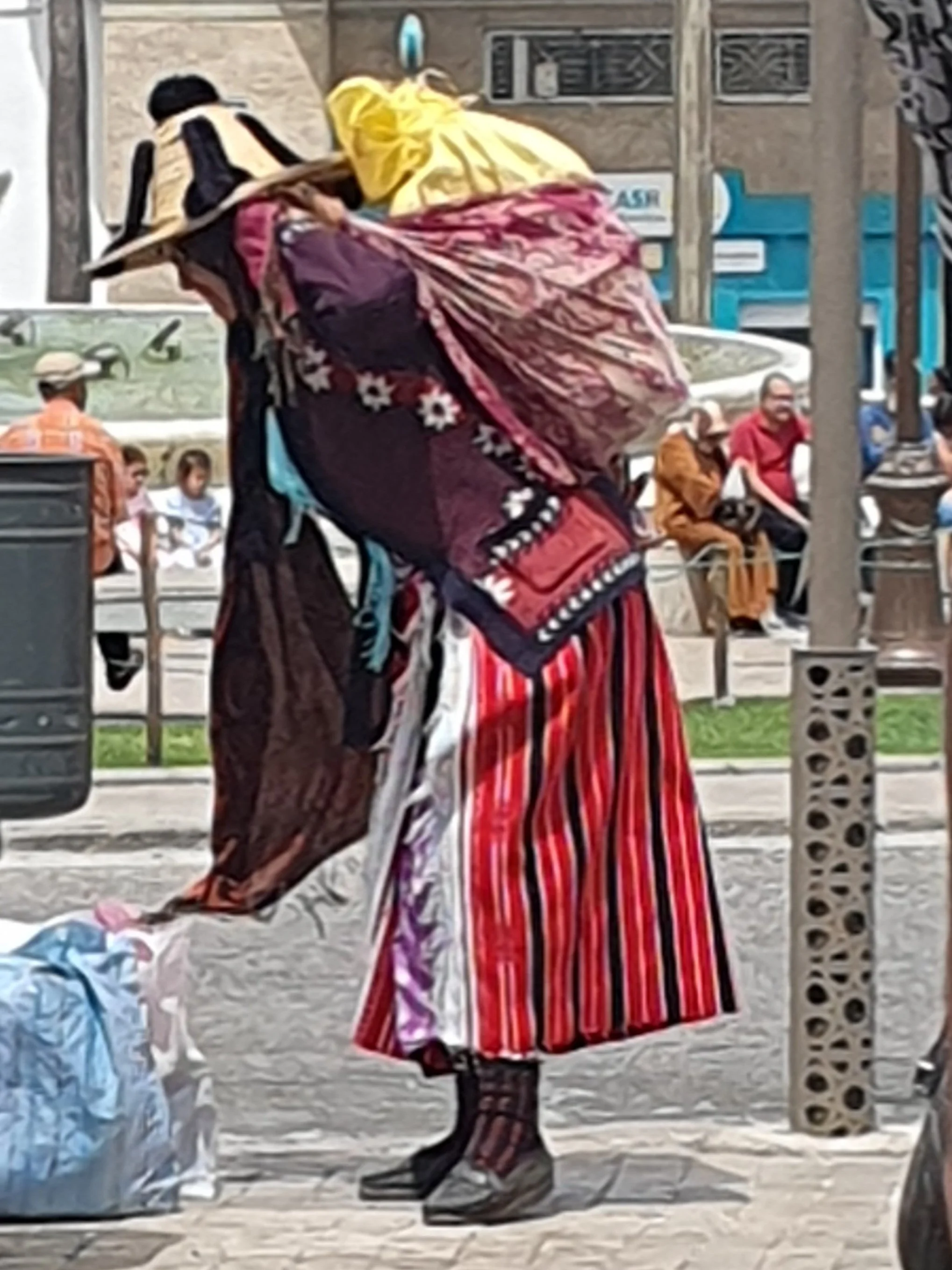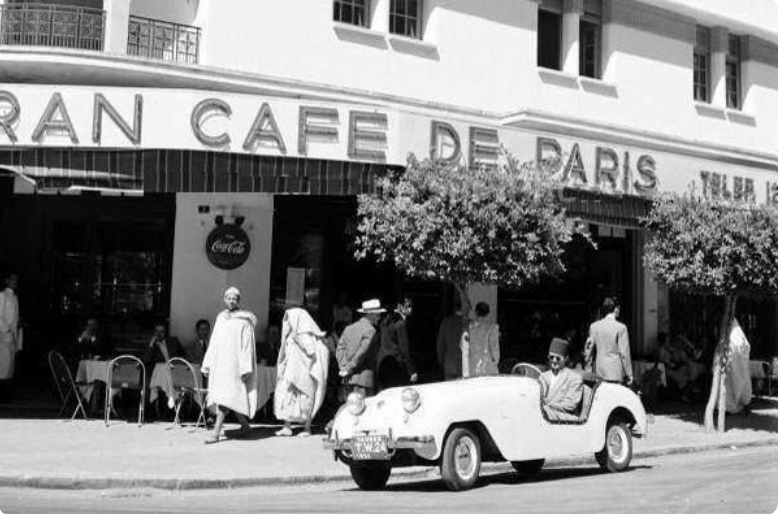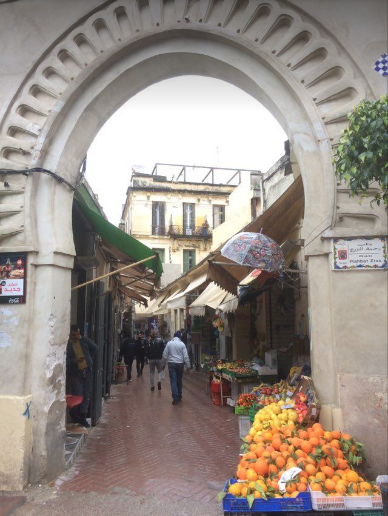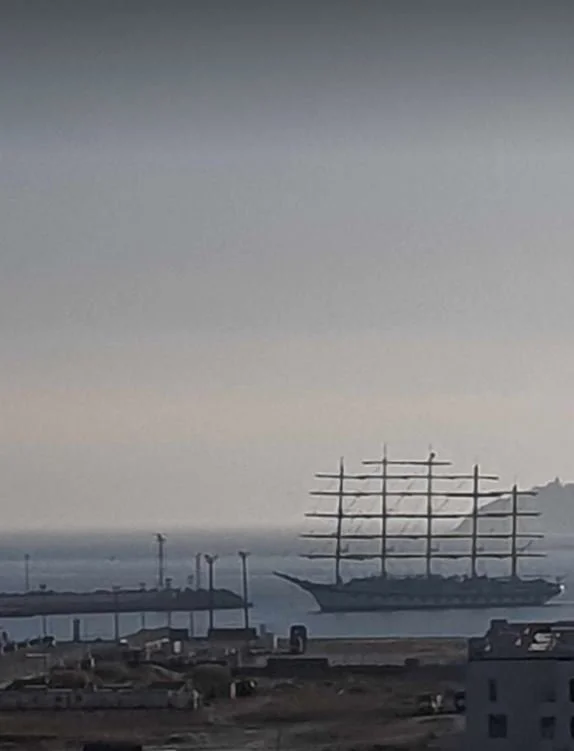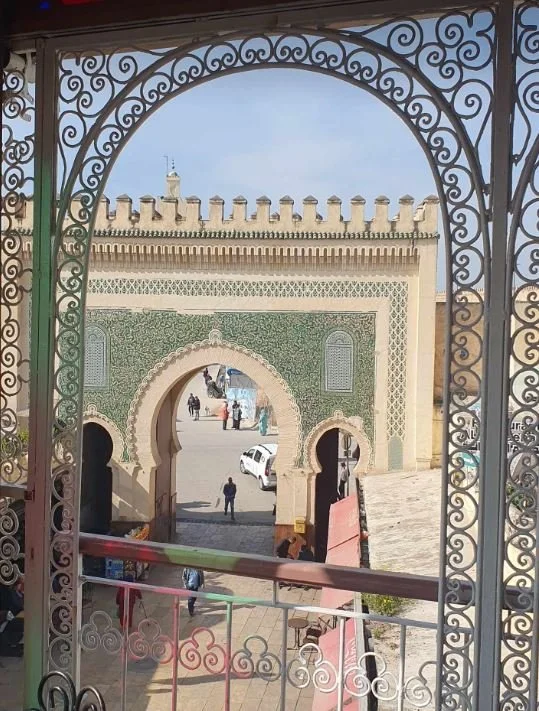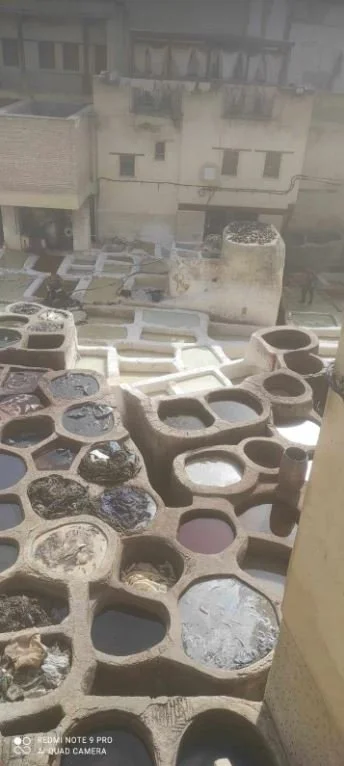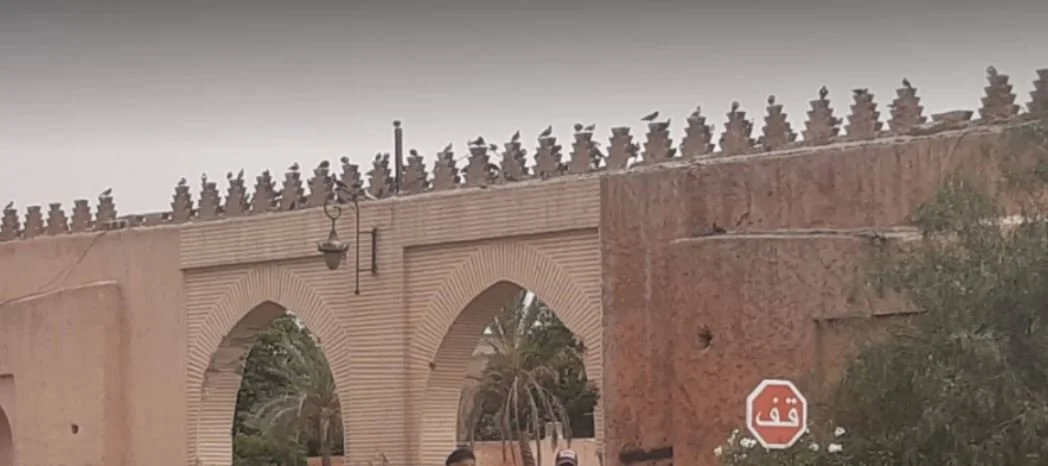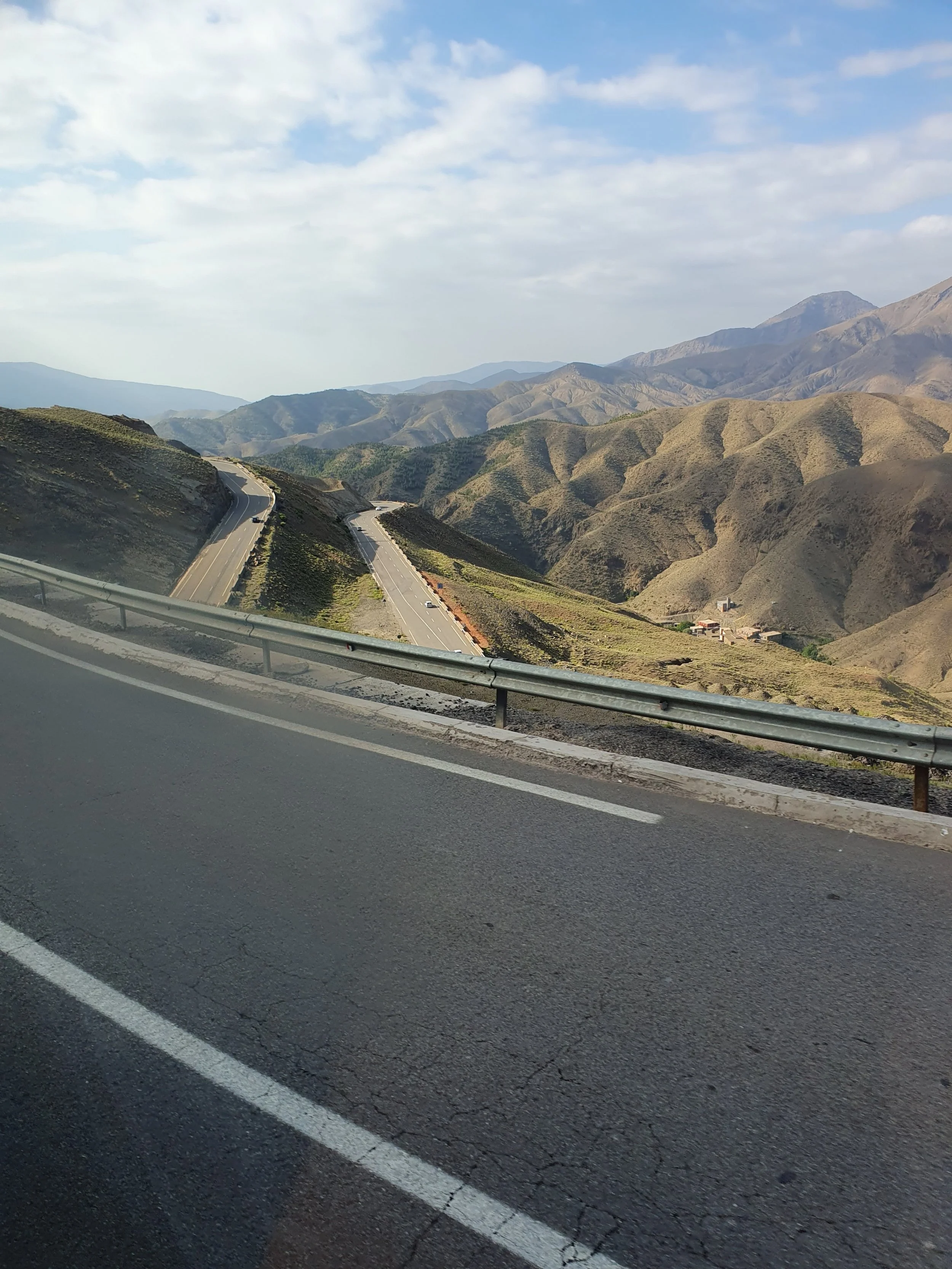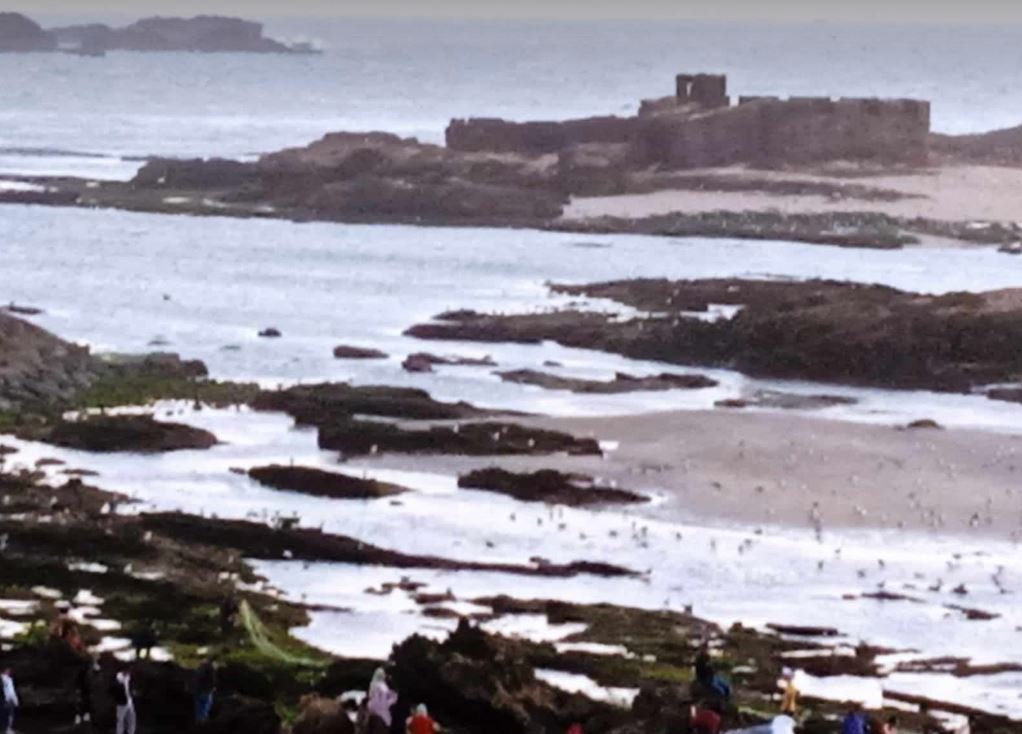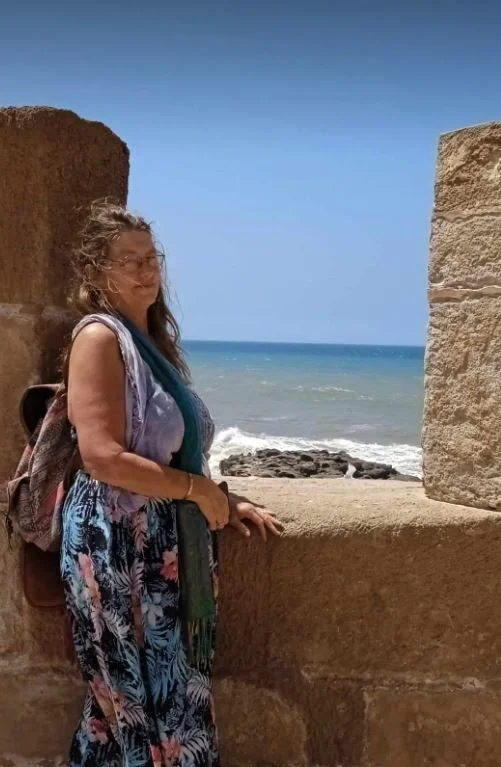Best Places to Stay in Tangier
From riads to luxury hotels, whether passing through or looking for apartments or villas for sale or rent,
from cheap hostels to your 5-star and boutique hotels,
Tangier offers everything.
Read on to find out the details.
What are the best places to stay in Tangier, Morocco? Can I stay in riads in Tangier? What is a riad?
What are the best 5 star and luxury hotels in Tangier?
Are there apartments in Tangier for sale or rent? What real estate options do I have in Tangier?
Where do I find a cheap hotel and the best hostel in Tangier?
Tangier is a tourist city, so there is a huge range of places to stay, everything from your luxury boutique hotels and riads, down to your more basic airbnbs and hostel accommodation. For longer stays there are many apartments and villas which are rentable by the month and upwards.
Your best option and place to stay will depend on your needs – whether you are passing through or coming to stay. Your choice will be affected by your budget, if you have children or others with you, whether you want to be near everything, or in a quieter location with beach access.
If you have specific needs you can check out the shop and order detailed and personalised answers.
But first, what types of accommodation are there in Tangier?
What is a Riad
Welcome to Morocco where the traditional style of home or dar is a riad.
If you have ever wandered through the maze of streets of a medina and noticed that it is all walls and doors, doesn’t it make you wonder where people live when there are so few windows?
They live on the other side of those walled alleyways, and sometimes above. To a western eye where outward facing windows is normal, that flies in the face of our logic. But many of the homes in the medina, especially the better ones, are riads where the wealthy lived.
So, what is a riad?
It is very specifically a stately Moroccan home or dar, where the rich and influential lived. They are built around a central courtyard which will include a water feature such as a fountain, intrinsically tiled floors and open to the sky. This lets out the heat and keeps them remarkably cool for the climate. Larger ones can have whole gardens in their courtyards.
Many of them have now become accommodation for tourists, and a must stay experience for every visitor to Morocco. An example for viewing is the American Legation. Now a museum, it was originally a stately home before it became the American consulate and the from the days when Morocco was the first country in the world to officially recognize the fledgling United States of America. It is in the medina near the Spanish Steps.
Riads are generally built upwards. While space is not an issue in Morocco, for safety the villages and towns were kept densely packed – so homes went up, not out. A riad can have several floors with rooms opening off stairwells and small balconies around the courtyard ‘well’. The rooftop is the pinnacle in every respect. In Tangier this often means sea views of the Mediterranean, of Tangier Bay, and Spain. These can be the perfect place for breakfast, a Moroccan mint tea or coffee break, or an evening drink, especially in the summer.
The ancient medina is full of beautiful riads, many now available for a stay with prices ranging from the luxurious and well appointed to the cheaper ones for a more moderate budget. Some names include:
Riad Tinggis
Riad Mokhtar
Riad Dar Nour
The Morocco Club
Kasbah Rose
Top of the Range – Villa Mabrouka
If you want the very, very best, there is one place to stay which surpasses everything else in Tangier. This is the Villa Mabrouka at the top of the medina. Tangier seems to have always been a magnet for the creative and the rich.
Villa Mabrouka was originally the home of Yves Saint Laurent and where he entertained guests such as Andy Warhol and Mick Jagger. Designed in the 1940s style with a blend of traditional Moroccan and English country it has 12 rooms and comes in the range of $500-1500 per night. With beautiful gardens and superbly designed rooms plus a gourmet restaurant, it is the superlative stay in Tangier.
Boutique Hotels
What is a boutique hotel, and how is it different to a standard 5-star hotel?
These may often be riads, or were grand houses in the past. The more expensive ones will have suites, not rooms. They tend to be smaller than hotels with a more intimate feeling and a greater focus towards an artistic flair, and can have just 3 or 4 suites/rooms, or many more (though usually not over 100). Often they are beautifully renovated riads, and can start from as little as $40-75 per night and even less.
At the other end of the scale they can be very grand riads with magnificent garden courtyards, and prices reaching upwards of $300 per night.
Boutique hotels are more personal than hotels, and right up there with style and service. Some worth noting in Tangier include:
Chez Josephine
Nord Pinot
Tangerino
Narcia
Hotels, from 5-star to the beach
If you are looking for luxury hotels in Tangier, there are plenty of options. Giving you rooms rather than suites (suites are of course available), Tangier has many top hotels. The 5-star will have everything at top level, and prices to match. Some notable ones you might consider:
El Minzah – in the middle between both the medina and the city centre, classy with sea views and swimming pool, and a string of famous guests over time.
Hilton – in the new city centre, conveniently near the train station and 2 minutes’ walk to the beach.
Continental – in the medina at its edge – one way overlooks the bay for your breakfast views, the other faces into the medina.
The Fairmont – out of the city bustle with superb views across the hillsides, for those who want style combined with the quiet and peaceful.
The Corniche, along the beach
There are also many quality hotels along the beach road called the Corniche, pricing slightly more comfortable yet still convenient to the medina, to the new city and to the night life and restaurants, and of course the beach. Some include:
Kenji Solazur
Miramar
Mamoru
Slightly cheaper, there are also some extremely good options in town near the Boulevarde, the main road above the Corniche where nothing ever closes. The beaches and medina are nearby – still within walking distance – but so are many restaurants, clubs and bars. Two of note are:
Hotel Rembrandt – with its Blue Pub beer garden, pool, nightclub and restaurant. Many rooms have views of the sea and Spain, while being in the heart of Tangier and a 10 minute walk to the medina.
Hotel Chellah – which a beer garden, pool, restaurant and often live music, near the Roxy district with its restaurants, cafes and nightclubs.
Airbnbs
Here we have a huge range of options in an industry with everything from classy and beautiful stays to the budget ones. But this means you can choose according to your budgets and needs.
The idea of Airbnb was a homestay and personal experience as compared to the less personal nature of hotels in general. At one end this can mean a room in somebody’s home where you are welcomed and sometimes offered the full homestay experience with bonus features like local food and events. Alternatively you could have a well-appointed apartment to yourself or to share, giving the homely feeling with greater privacy with the homeowner living elsewhere.
One of note in Tangier:
The Gold Room – in the middle of the medina with delightful host Dahab at http://airbnb.com/h/goldyy
Hostels, the Cheap Stays in Tangier
I come across so many people afraid of staying in hostels with notions that they are full of partying teenagers, they’re full of drugs, they’re not safe, or I’m too old.
None of these things are true.
I still choose to stay in hostels. I’m now 62, and frequently I have not been the oldest person staying.
Why stay in a hostel?
Besides that they are obviously cheap, I choose them over other types of accommodation when I am travelling solo because they are such a good way of meeting people. Even when I was first travelling in my early 20s, I’d do my touristy thing through the day, but I’d always looked forward to company in the evenings and the fun of meeting new people and sharing stories and information which is often only available from others who have just done what you are about to do.
There will always be some travelers in full-on party mode, and there will be hostels which are especially inviting to those people. But most people will party elsewhere and the hostels are generally quiet. If you are willing to take the leap, these are the things I look for when booking a hostel.
I generally use booking.com and filter from the cheapest. But I choose more by location, as long as the rating is reasonable – say, above an 8 out of 10. As a member of booking.com you get discounts and special offers from some. Always check the ones of interest on their own webpage before booking since they sometimes are cheaper if you book directly there.
What do I look for in a hostel?
Besides location and ratings - breakfast included is always a winner for me. It saves an early morning rush when your belly is grumbling, and will often be cheaper than eating out, even if the breakfast is fairly basic.
Secondly, I want to be able to meet people. I check for the photos of the communal areas – if there are inviting communal areas, people will use them. This makes it so easy to make friends – they are probably looking for company too, and if not, they are generally welcoming anyway. Start by asking where people are from, where they’ve been and where they are going. Too easy.
If the hostel has breakfast, you know that the communal areas will be good for meeting people. Remember, most others are travelling alone too, and just as keen to chat as you are. I’ve had hostels where breakfast becomes an all-day chat-fest. Other times where I’ve linked up with someone for the day to visit the same sites, or a cheaper way to my next destination because of a group discount.
You never know when someone is looking for a 4th person to fill a car heading to somewhere else. It is worth keeping your mind flexible about your itinerary so you can take advantage of opportunities when they come up. Sometimes the best parts of travel are the unexpected.
The front desk and hostel staff should also be excellent sources of information. When I arrive, I usually ask where to go and for the best eats – they are the ones in the know. They will usually have a map for you where they can mark the spots you’re most likely to be interested in, and pass on some local secrets – stuff the information office is unlikely to know about.
And perhaps most important of all, the sleeping arrangements.
Most hostels will have some private rooms, which can have an ensuite bathroom, or have access to the hostel shared bathroom facilities.
The dormitories will almost always include options for women only, as well as men only and mixed rooms of varying sizes. The more beds, the cheaper. The less beds, the less chance of getting that annoying person who needs to rustle a lot of plastic bags at 3am.
So what do I look for?
If there are curtains around each bunk, that is a definite plus. It gives you room for a little privacy. I usually opt for the bottom bunk so I’m not bothered if the ceiling light goes on and off at all hours – sometimes someone has an early departure, for example.
Most bunks these days will have their own light, and hopefully power socket. Some also have an extra USB port – but check the photos. The best ones even have a little shelf for each bunk. I need somewhere to put my glasses, so this is always a double bonus for me.
Most hostels will also have a locker for each bed. But be ready for anything. It may or may not be big enough for your backpack. You should always carry your own padlock – not all hostels provide locks. Some will charge extra for one.
While most people are decent, it is only common sense when in shared living spaces to follow all the normal basic precautions. You can put a lock on your backpack zipper. I never have because I never leave anything of value in it. I have never had a problem.
I never leave my laptop out. Always keep it locked in your locker when you’re not there. Even if I leave for a minute to use the bathroom, I will put it out of sight under my pillow or somewhere. Otherwise I have nothing of value other than my phone, passport, money and cards which I always keep on me, making use of a bum bag under my clothing and other hiding spots.
It’s good not to keep all your eggs in one basket. You are unlikely to have any trouble, but just in case, a backup card hidden in a different spot can take a lot of stress out of an unpleasant situation. All this is just sensible precautions, like looking both ways before you cross the road.
I find hostels a great place to stay, and choose them by preference. So often I hear of people being lonely while travelling. This can happen in the hotels where you are staying alone and there is generally little to no interaction between guests.
Hostels are the perfect opposite to this. I have met so many inspiring people, interesting people, had a lot of fun with people of all ages from all over the world – even in their 70s and maybe more. I have even made some long-term friends. Reconnecting with people in different places has a unique place of its own.
Understandably some people want the greater comfort and privacy of the more expensive accommodation options. But don’t pass off hostels as dens of iniquity. They are far from it, and can afford some wonderful travel experiences.
In Tangier, especially off-season, they can be as little as $10 a night. My top recommendations for Tangier are:
Bayt Alice – this one always comes up trumps and is so popular you now need to book ahead most of the year. Designed by a French decorator, the rooms are charming and full of Morocco and include a rooftop to chill with views of the bay. Yes – this is the one I’ve stayed at in Tangier, and more than once.
Tangiers Hostel & Riad Hostel Tangier – These are the other two I most often hear people are staying at, with great locations.
Apartments in Tangier for Sale and Rent – Tangier Real Estate
If you’re planning to stay for more than 2 weeks, there are also many apartments and villas available for rent and sale at a whole range of prices. The minimum rent time will be 1 month, but this can be cheaper than paying for 2 weeks – so check out your options here.
You may be a digital nomad, a slomad, or just want to take your time chilling. An apartment gives you more space and comfort since they are fully functional homes. Prices for a fully furnished flat in the city can start from $400 per month and up, with villas and gardens, or luxury appointed apartments in Malabata next to the sea.
You may have a work contract as a teacher for example, or you may want to rent somewhere to give yourself time to look around and to get a feel for Tangier and where it might suit you to buy. A year-long rental agreement will be even less per month, giving you more for your money.
For an excellent agent with an extensive list of apartments and villas, furnished and unfurnished, both for rental and sales,
contact Ashraf Alawamleh on +212 644202053.
Available in several languages
He is also available through the Tangiers Expat page on facebook, which is another excellent source of information, and on Instagram. He can readily be found via Abou Tayssir, The Syrian restaurant, which is worth a stop for some excellent food anyway.
Be aware that in Morocco unfurnished means not even a stove or a hot water heater for a shower. But if you don’t have your own furniture, there are many fully furnished apartments available, some of them very tastefully decorated.
If you have any specific information which has not been addressed here, or any unique personal needs, check out my shop for the 5 questions option. I will give answers as detailed and specific to your needs as I possibly can.
Also read my page on Where to Stay in Tangier (2) – coming shortly – which gives a rundown of the different localities in Tangier to help you get a feel for the city and the sort of location which might suit your personal preferences best.
Morocco - Where to stay, and Where to Visit
White, blue, yellow or red?
Are Moroccan cities really colour-coded?
Come to visit the magical Morocco! Or to move here.
But where to stay?
So many exotic places to choose from. If you’re looking for a spot to stay – even if for just a little – think about your lifestyle preferences and the kind of place that would suit you. Here’s a mini guide around the country, and the coloured cities – white, blue, yellow and red. What are the best places to stay?
A woman from the mountains near Tangier in her traditional clothing, on the way home from the markets
My first thought was Casablanca. I mean – the movie! I’m from Australia, and I’d literally heard of 3 places – Casablanca because of the movie, Marrakech – also a movie with Owen Wilson called Ishtar, and I think I’d heard of Tangier, Morocco.
But Morocco is so, so much more.
CASABLANCA
So – what of Casablanca? The idea of telling people I was living there was so exotic. Unfortunately, when someone on social media asks what is the best thing to do in Casablanca, most of the answers say “Leave it”.
Jokes aside, I have come across people who love it.
So, what is Casablanca? Mostly it’s a big city. About 6 million people, crowded, and not much there besides the big mosque on the sea. It has, of course, all your usual city infrastructure, more work opportunities, and is well connected with everywhere else in Morocco. That is what people like.
There are food places and night places, and it has Morocco’s main airport which includes bargain airfares. Not just from Casablanca, but buy ahead and you can find return airfares for €20 and €30 to Europe – especially some cities in Spain, and I’ve even heard of that for Rome and London.
But when it comes to the idea of somewhere exotic, for Casablanca it’s mostly just in the name. Worst of all, the movie Casablanca was never even filmed there! It was all done on site in Los Angeles. Tangier’s own Cafe de Paris exudes more of the atmosphere of the movie than what I have seen of Casablanca.
Old photo of Cafe de Paris in Tangier
TANGIER - The White City
Here I will be unashamedly biased. I love Tangier – as do most people, whether living here or passing through, whether Moroccan or a foreigner.
A tumble of white buildings cascade down the hillsides in the medina from the top at the Kasbah. The sparkling Mediterranean is visible from many balconies and rooftops with the wonderful backdrop of Spain. There are beaches near enough to walk to for a swim in the summer. The Atlantic Ocean beaches are about the same by mini-bus-taxi. Tangier is the white city.
The white city - the Tangier medina with the bay behind it, painted by artist and friend Noel Bensted.
The weather in Tangier also gives it a very pleasant and moderate climate. In summer there is usually a pleasant sea breeze taking the edge off the sun’s heat. It is nowhere near as hot as the rest of Morocco, with temperatures consistent day to day. In winter it doesn’t really get that cold – in spite of what the locals will say. The temperature rarely drops below 11 degrees even at night. I have often sat outside at a café until closing time at 11pm, even in December.
The medina is small enough to be fun. The locals are friendly – nothing like the harassment you might get in Marrakech, or even Fes. There’s a night life, plenty of cafes, a cosmopolitan community, and it seems to be a magnet for all types of artists and other interesting people – painters, musicians, writers…
One of the gateways into the medina, inviting you to explore the maze of alleyways and streets
It has a slightly wild flavour, a frontier town. Just far enough from the rest of Morocco to have an individual streak. It is a gateway to Europe. The locals typically speak 3-5 languages comfortably, maybe as a result of its international past – it was an international zone from the 1920s to the 1950s, owned at one point by 7 different countries. With no border issues, it was visited by many famous writers, actors and artists.
There are more job opportunities in Tangier than most parts of Morocco. Besides teaching, many people are employed by Tangier Med, the port, or in the automotive industry. Morocco is a huge supplier of parts and other services for the car manufacturers. English teaching has jobs available almost everywhere in Morocco. And of course, if you work remotely it’s just a matter of choosing your city for what suits you as a place to live. And Tangier is a good place for that.
Tangier - a city where anything can happen
You can go up to the top of the medina to the Kasbah (old castle) for a coffee or Moroccan mint tea with views of the Mediterranean and Spain from one of the many rooftop cafes, including from the spectacular Café Hafa. On your way check out the Phoenecian graves dug into the clifftops by the Romans. Visit the American Legation – medina house and museum – near the Spanish Steps, the place where Morocco was the first country in the world to officially recognize the United States of America.
Sit over a wine and watch the yachts and the sun setting over the medina from Chiringuito, or walk along the beachfront and watch the changing colours of Tangier bay over coffee and ice-cream, check out the beach bars and night life, or a food event, or hop on and off the double decker tour bus which does the rounds of Tangier.
And of course, there’s Europe. In about an hour you can get to Spain, either Tarifa by ferry, or to Ceuta by mini-bus-taxi, have lunch, do some shopping, or go to the beach. It’s both a great place to live, and a great place to pause and chill on your way through.
CHEFCHAOUEN - The Blue City
This is not really a likely location to live since it is quite small, but it is a must-do day trip (or overnight) from Tangier – the blue city. Painted blue, you can check it out from Tangier, or stay and chill a bit longer – throw in a walk to the waterfall.
And when I say that it is blue – it is spectacularly blue, a truly breathtaking town. The whole medina, the walls and even the street under your feet – are painted a pretty blue, with endless photo opportunities including the cats as ever-obliging models on the steps and in the corners between the plants.
It is just over a 2-hour ride by mini-bus-taxi from Tangier. In contrast to the open sea aspect of Tangier, it is nestled between the hills. Chefchouan is a place for rooftop sunsets over the mountains and Moroccan mint tea.
And another added bonus – half way to Chefchouan is the city of Tetouan, the other big one in the north. Not as big as Tangier and quieter, it does nevertheless have some lovely quiet beaches to stay at just a 15 minute taxi ride from the city centre.
RABAT
As we move down the country, the next spot is Rabat, Morocco’s capital city since the 1950s. It is a more modern city, about 600,000 people. If you’re interested in something more sophisticated than Tangier’s wild edge, then Rabat is probably a good choice. To be fair, I have come across a lot of people who genuinely like living there. There are good job opportunities here, as you would expect in any government city, and it is very close to Casablanca.
It’s not far from Casablanca on your way from Tangier. I have often heard people say they like living there – besides Tangier, going by the comments it would seem to be the second city of choice.
FES - The Yellow City
If we follow the cities south by colour, the next one is Fes, the city where the buildings all take on the gentle yellow of the soil around there. Everywhere you go there are old walls, the kasbah, narrow alleyways with walls hiding some beautiful riads. Fes is the yellow city.
The yellow city, with its soft creamy buildings and gateways
It’s an old capital, and an historic city. It has one of the biggest ancient medinas in the world (medina literally just means city centre, though is often used to refer specifically to the old medina). It also has the largest unmotorized city centre in the world. Everything inside the walled city is by foot, donkey, or pulled on a cart. Background noises are more likely to be the clip clop of a donkey or the call to prayer. There are no vehicle noises inside the old walled city.
It has your open-air leather dying ‘factories’ that have always fascinated me, a university which claims to be the oldest in the world, possibly more traditional culture than elsewhere, and for me – a mecca for buying earrings!
One of the leather dying factories - a little on the nose, but a fascinating visit to an ancient industry
While the whole city of Tangier has a population of around 1 million, Fes has that inside the old medina – maybe, cos nobody is really sure. As with all old cities, it has now spread well beyond the city walls into the modern part of town.
It is more conservative than Tangier, including the foreign community who choose to live there – the further south you go the more conservative Morocco is.
Nearby you have Meknes and the ruins of the old Roman city of Volubilis. Fes is surrounded by the main food basin for Morocco, and the Atlas Mountains and Ifran where you can actually ski in winter. So yes – Fes gets very cold in winter, as well as the very hot summer temperatures which regularly go up into the high 40s.
MARRAKECH - The Red City
The fourth city by colour – Marrakech. Marrakech is the red city. The first thing that will hit you is the colour.
The old city wall with its distinctive hint of red
Actually, I lie. First the heat – then the colour. It is truly a red city, with its buildings having the red of the desert and rocks surrounding it. It is not a desert city as such – but very near, and very dry. And very hot. It is a frontier city even more than Tangier, being historically the first big city for the camel trains as they brought their goods across the desert.
The centre of the old city is the famous square – Jemaa el-Fnaa, full of energy and excitement. But don’t think that’s all of Marrakech. Besides the desert – if you want to do it justice, get a 5-day trip, and avoid the summer! – it has a long history as a capital in Morocco and a great deal of history to be found. While the city centre is very dramatic, that is for the tourists. I have heard mixed reports of living there – some who are happy, others not, saying it can take a long time to become accepted as a local.
The road from Marrakech to Ouarzazate - a gem that nobody even talks about
South from Marrakech you also have Ouarzazate, Morocco’s Hollywood. To get there you have one of those spectacular mountain drives as you cross into the Atlas Mountains of the south. And of course, Ait BenHaddou – the city featured in Game of Thrones, Gladiator, and many other series and movies. Marrakech is the gateway to the Sahara and the desert communities.
Ait Benhaddou - the city from Game of Thrones and Gladiator - not fiction, but very real
While Casablanca is the spot to go if you are an actor, if you are just an ordinary person like myself, there is also a high demand for native English speakers for the movie industry, for ads and drama-documentaries. I get work as an extra in Tangier. It is eratic and a lot of waiting, but I find it fun.
ESSAOUIRA and AGADIR
The other place of note for foreigners and tourists are Essaouira and Agadir.
Essaouira is a kind of hippy-beach place, and usually ranks high on the to-see in Morocco list. It is a chill town on the Atlantic Ocean a little north of Agadir, if a tendency to be very windy. I believe it has a decent foreign community, and is definitely a good place for fans of surfing and other beach activities.
This is the view from the turreted boardwalk which also features in Game of Thrones
Agadir is the southern coastal capital, a calm city on the coast, bigger than Essaouira. It has all the usuals of walled medina and kasbah (castle), and a pleasant place to live by all accounts.
South – way south – on the coast, and very deserty is your last city of note in Morocco – Dacca. It is definitely a unique place to visit, perched as it is, the last city going south to Senegal, between the ocean and the desert, on the brink of Morocco and its Berber peoples.
If you are looking for somewhere in Morocco to settle, come and check out the cities and see what is right for you. As either a tourist or a new resident, all these and more are worth a visit. Morocco is a unique and beautiful place full of friendly locals and every bit the exotic adventure.


